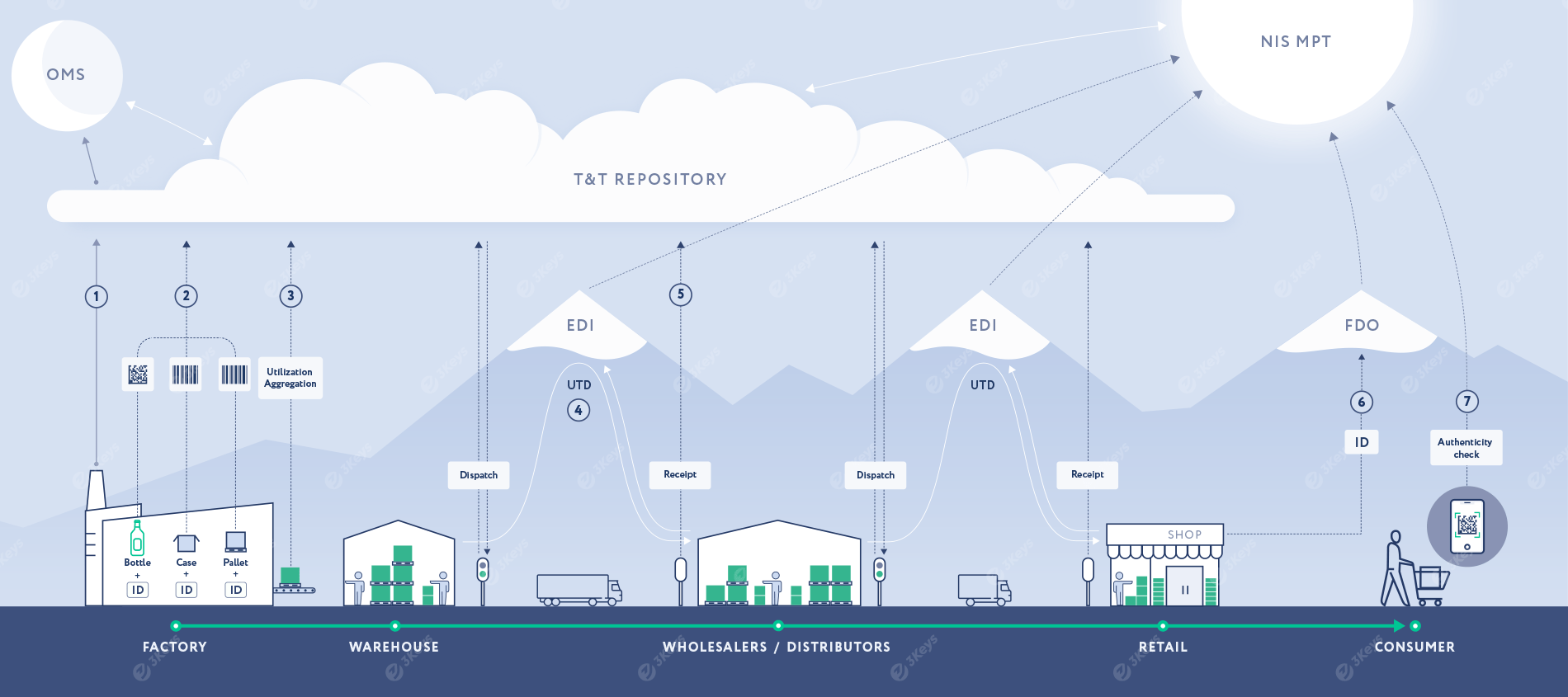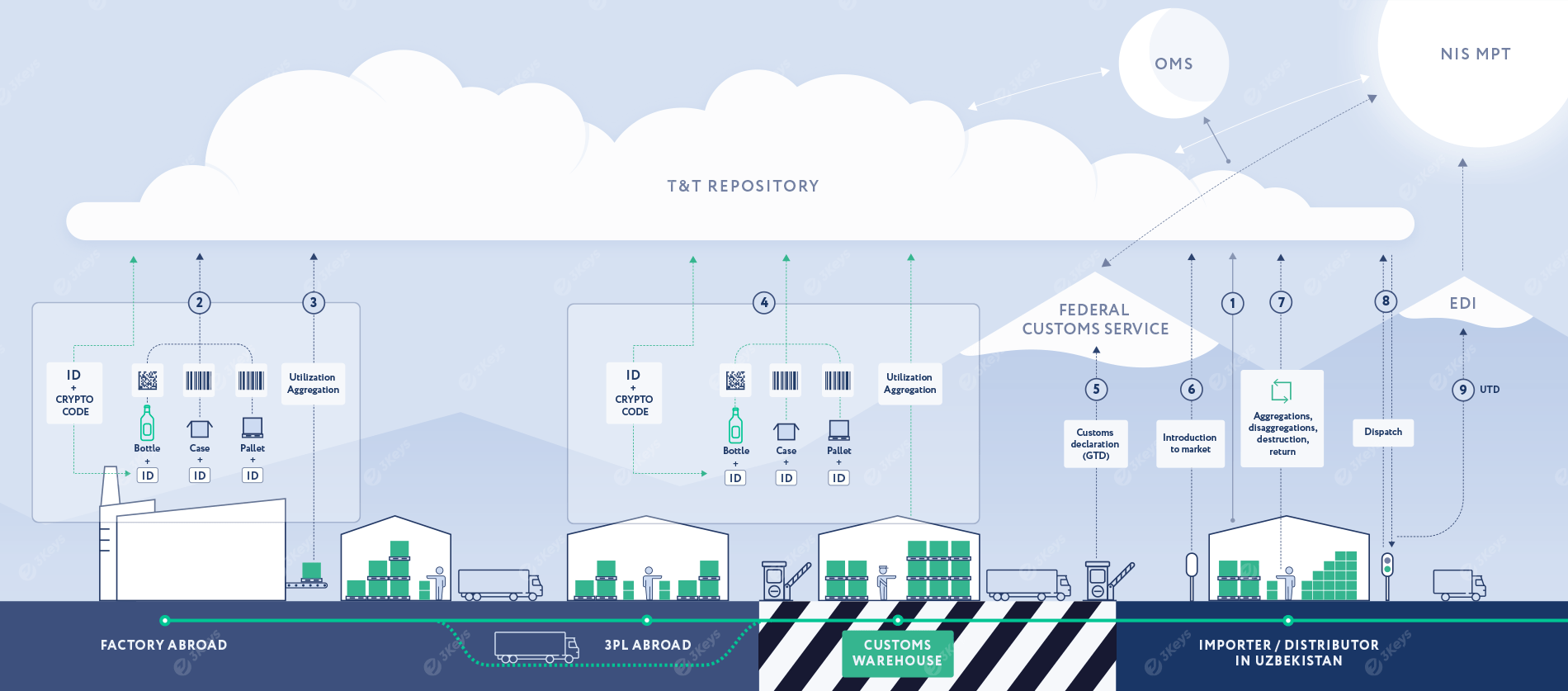The start of mandatory digital labeling of the product group «Alcohol» – January 1, 2021.
Labeling of the product group «Alcohol» is introduced in stages. Producers and importers shall ensure:
1) application of digital identification means on the consumer packaging, as well as entering information about labeling of alcohol products into the information labeling system:
- alcoholic beverages – from January 1, 2021;
- wine and wine products – from January 1, 2021;
- alcoholic products in metal, including aluminum containers – from December 1, 2021.
2) ensure aggregation of alcohol products:
- alcoholic beverages – from December 1, 2021;
- wine and wine products – from December 1, 2021;
- alcohol products in metal, including aluminum packaging – from November 1, 2022.

